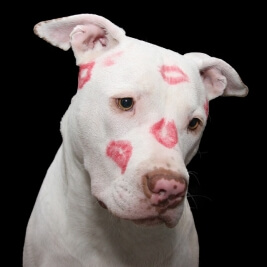Winter Blanket Tug-of-War: A Horse Owner’s Dilemma
 My Morgan mares are more beautiful than ever in winter. Their coats are of a clear and deep berry - red Robin, darker Martha - clean and airy with an extra shine that seems to come from the inside. During thunderstorms, they are heavily frosted with snow, like delicious chocolate cakes. Icicles resonate in their long moons and snowflakes wrap their lashes.
My Morgan mares are more beautiful than ever in winter. Their coats are of a clear and deep berry - red Robin, darker Martha - clean and airy with an extra shine that seems to come from the inside. During thunderstorms, they are heavily frosted with snow, like delicious chocolate cakes. Icicles resonate in their long moons and snowflakes wrap their lashes.They have stands to enter if they wish. They often choose differently, even during cold rain showers. I've never seen them shiver. On particularly cold mornings when the foot is good, there is a wild rump as it warms up, but generally it is heated from the inside with a lot of hay.
Meanwhile, I pass by barns and houses and see the horses coming out in bright, comfortable blankets. I like the view. It is colorful and I feel the satisfaction of the owners who have paid for these covers, new every year, and who attract them with so much attention, the feeling that they are doing the right thing.
Are they?
I would like to say right away that this is not the indigenous tendency of equestrian sport, fueled by social media, to condemn the way others care for and treat their animals. Really, I just want to make sure I do the right thing with my horses. So I was happy to read Natálija Aleksandrova's well-documented article, "Thermoregulation in Horses in a Cold Period of the Year", reprinted this month in the Draft Horse Journal of the Holistic Horse and Hoof Care blog. This confirmed a number of things I already knew and put a little more science behind my inspiration.
The horses survived the ice age by developing many defenses against the cold. We humans see the cold as something that happens on the skin. Indeed, the most important problem is thermoregulation. Horses must maintain an internal body temperature of around 100.4 ° F and many body systems help them do so.
A horse's skin is relatively thick and insulates them from the cold.

A longer winter coat increases insulation. The horse can make the fur even more insulating from the section of the pillar: raise and lower the hair or point it in different directions. The piloerection can increase the depth of the hand from 10% to 30%. It's like having a Mountain Horse jacket with zip lining and underarm openings. (We also have muscle piloerection, but it lacks an effective capillary layer, we only have goose bumps.)
The natural fat on the hair repels water and guides it through the outer layer while the horse's body remains dry. The grooming can remove this coating, so resist the urge to keep your horse naturally. (This is something my 4-H leader told me 45 years ago.)
The contraction of the arteries of the skin reduces the amount of blood brought to the surface. The blood on the surface is cooled and can contribute to a drop in temperature when it is returned to the heart.
Body fat is also a good isolation. It has poor heat conduction and little blood. This is why horses have evolved to become heavier in the fall, with a 20% increase. (In Korea, October is known as the time of "high skies and fat horses".) Fat is so effective that it can change patterns of hair growth. Thicker horses generally have shorter coats than thinner horses.
Large format is an advantage when it is cold. The surface / body mass ratio decreases with greater dimensions. This explains why smaller horses and foals have heavier coats than larger horses.
Being around is better than being flat. The Nordic types, including draft horses, native breeds and ponies, generally have a heavier body with shorter legs and a long and thick mane. On a compact horse, heavy manes can provide considerable insulation in the neck and shoulders. Horses built as radiators, long and flat, are more likely to get cold.
The fiber digestion process also produces heat. The appendix of the horse is like a wood stove that increases its body temperature. That's why horses need more food when it's cold. The smaller the horse, the greater the increase required. In extremely cold climates, the best practice is to have access to hay 24 hours a day, 7 days a week, especially during a period of rapid drop in temperature.

Comments
Post a Comment